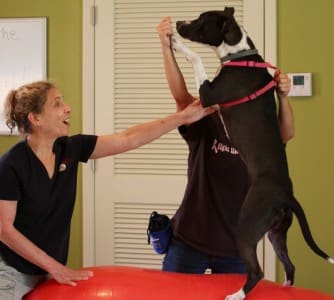Rocky’s Viewpoint

 We get this question a lot – what is Pilates? The Pilates method was developed by Joseph Pilates. As a child, he was unhealthy and studied many forms of self-improvement drawing from Eastern practices and Zen Buddhism. Through his studies, he was motivated by the Greek’s ideal of man who was perfected through the development of body, mind and spirit.
We get this question a lot – what is Pilates? The Pilates method was developed by Joseph Pilates. As a child, he was unhealthy and studied many forms of self-improvement drawing from Eastern practices and Zen Buddhism. Through his studies, he was motivated by the Greek’s ideal of man who was perfected through the development of body, mind and spirit.
When he was drafted by England at the beginning of WWI, the Pilates method was born. Before entering the war, he was a body builder, a wrestler, gymnast, boxer, skier and diver. When in the interment camp, he started to develop floor exercises to help maintain his (and the other soldiers) physical condition and developed theories that focused on what he called “core” muscles, all the muscles that support the trunk of the body. For us, Pilates exercises affect our bodies in numerous ways – they flatten our stomachs, improve posture, alleviate back pain, enhance athletic performance, improve balance and coordination, increase flexibility, improve range of motion, deepen breathing, alleviate stress and physical tension, reduce injures and increase body awareness. Lots of benefits!
Since Pilates is good for us, it only makes sense that it can benefit our dogs as well. Dogs need strong core muscles and good balance, coordination and flexibility to help prevent injuries, and maintain proper movement and flexibility. It’s especially important for canine athletes and performance dogs as it enhances their performance.
Dr. Carol Helfer of Canine Peak Performance Sports Medicine & Physical Rehabilitation Center in Portland, Oregon states “a few simple exercises could really change the dog’s quality of life by preventing injury and enhancing their performance.” As such, she’s designed 10 exercises that she calls “tricks training.” They are:
I remember taking my lab Maxie to a tricks class many years ago – this was fun for both of us. At the time, I had no idea that we were really practicing canine pilates. It was both physically and mentally challenging for her – definitely an added benefit. We practiced our “tricks” regularly. We performed for friends, nursing home residents, and hospital patients when we were doing pet assisted therapy. They loved it and she enjoyed performing. The best part of all is that she stayed in top physical condition until she passed at the age of 14.
One more thing – some of these exercises may be easy to do at home, but there are other core exercises that use elongated balls and other equipment (just like we have) that work specifically to strengthen core muscles, increase balance and coordination and enhance flexibility. All dogs can benefit greatly from this type of exercise. If you would like to know more, please contact us. It goes to show you, what’s good for us, is good for our dogs, without a doubt!